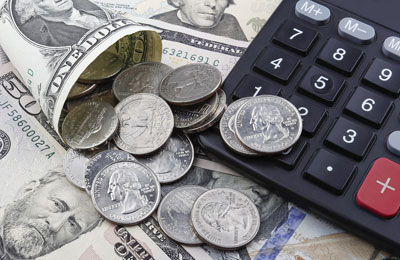
US economy grew at 0.2 per cent rate in the first quarter.
US economy falters in Q1 on weather, energy prices
WASHINGTON, April 30, 2015
US economic growth nearly stalled in the first quarter as harsh weather dampened consumer spending and energy companies struggling with low prices slashed spending.
Gross domestic product expanded at an only 0.2 per cent annual rate, the Commerce Department said on Wednesday. That was a big step down from the fourth quarter's 2.2 per cent pace and marked the weakest reading in a year.
A strong dollar and a now-resolved labor dispute at normally busy West Coast ports also slammed growth, the government said.
While there are signs the economy is pulling out of the soft patch, the lack of a vigorous growth rebound has convinced investors the US Federal Reserve will wait until late this year to start hiking interest rates.
The recovery is the slowest on record and the economy has yet to experience annual growth in excess of 2.5 per cent.
"The US economy has yet to demonstrate the self-sustaining resilience that the Fed wants to see before raising interest rates," said Diane Swonk, chief economist at Mesirow Financial in Chicago. "A June liftoff is now off the table, our forecast for a September move holds but even that has become tenuous."
Fed officials at the end of their two-day policy meeting on Wednesday acknowledged the softer growth, but shrugged it off as "in part reflecting transitory factors."
The dollar hit a nine-week low against a basket of currencies. Prices for US Treasury debt fell in line with a global bond sell-off, sparked by a poorly received five-year German bond auction. US stocks were trading lower.
Economists had expected the economy to expand at a 1.0 per cent rate. The sharp growth slowdown is probably not a true reflection of the economy's health, given the role of temporary factors such as the weather and the ports dispute.
"The extent and depth of the weakness in today's GDP report, sets the US up for another disappointing though somewhat better GDP report in the second quarter. We are not ready to throw in the towel for the year," said Scott Anderson, chief economist at Bank of the West in San Francisco.
HIBERNATING CONSUMERS
The economy has had a jerky recovery from the 2007-2009 financial crisis, with the first quarter marking only the latest setback. The government did not quantify the impact of the weather, the strong dollar, lower energy prices and the ports disruptions on growth last quarter.
Economists, however, estimate unusually cold weather in February chopped off as much as half a per centage point, with the port disruptions shaving off a further 0.3 per centage point.
The weather impact was evident in weakness in consumer spending. Growth in consumer spending, which accounts for more than two-thirds of US economic activity, slowed to a 1.9 per cent rate. That was the slowest in a year and followed a brisk 4.4 per cent pace in the fourth quarter.
The sharp moderation in consumer spending came even though households enjoyed huge savings from a big drop in gasoline prices. Consumers boosted their savings to $727.8 billion from $603.4 billion in the fourth quarter, which should provide a tailwind for future consumer spending.
Construction also took a hit, while lower energy prices, which have cut into domestic oil production, undermined business investment.
Spending on nonresidential structures, which includes oil exploration and well drilling, tumbled at a 23.1 per cent rate. That was the fastest pace of decline in four years and the first contraction since the first quarter of 2013.
The decline was driven by mining exploration, shafts and wells investment, which plunged at a 48.7 per cent pace.
Nonresidential structures lopped off 0.75 percentage point from growth.
Schlumberger, the world's No. 1 oil-field services provider, has slashed its capital spending plans for this year by about $500 million to $2.5 billion, while competitor Halliburton cut its by about 15 per cent to $2.8 billion.
Economists believe the bulk of the spending cuts were front-loaded into the first quarter, and they expect they will present less of a drag on growth in the April-June quarter.
"The weakness in business investment in response to the oil price shock may be transitory, but we continue to have doubts that the next leg of faster investment will kick in if GDP growth, especially consumer demand, does not improve significantly," said Dana Peterson, an economist at Citigroup in New York.
The dollar, which gained 4.5 per cent against the currencies of the United States' main trade partners in the first quarter, weighed on trade, as did the West Coast ports dispute. Trade subtracted 1.25 per centage points from first-quarter growth.
There was a surprise increase in inventory accumulation, which added 0.74 percentage point to GDP growth.
Inventories increased $110.3 billion, the largest gain since the third quarter of 2010 and one that suggests inventories will weigh on growth in the second quarter. – Reuters







